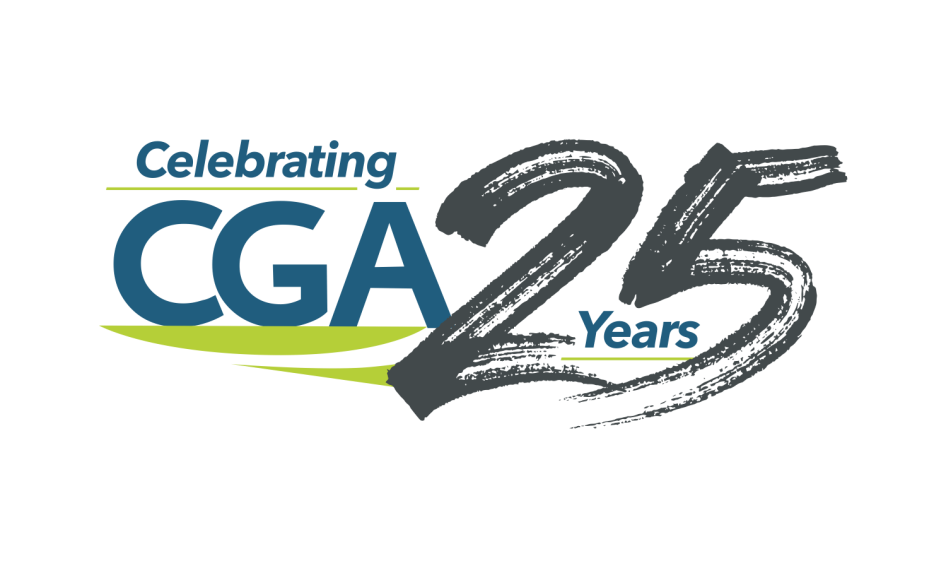d'Vinci Interactive is an award-winning comprehensive learning solutions provider for corporate, government, medical, non-profit, and K-12 target markets.

From Insight to Action: 5 Training Takeaways from CGA 2025
April 24, 2025

By Angeline Evans, Client Solutions Consultant and Jenny Kerwin, Manager, Learning Management Systems
The 2025 CGA Conference & Expo offered a compelling look at where the damage prevention industry is headed—and how training and education are evolving to support that progress.
This year’s conversations weren’t about repeating challenges. The focus was clear: how do we turn insights into action—and training into impact?
As a partner to organizations that are actively shaping this future, we left the conference inspired—and more committed than ever to delivering custom training and education solutions that drive real change.
Here are five key takeaways that stood out—and what they mean for how we continue to build safer, smarter teams across the industry.
1. TRAINING MUST EVOLVE FROM ONE-TIME EVENTS TO EMBEDDED PRACTICE
There’s a growing consensus: training can’t live on a checklist. In damage prevention, the conditions, risks, and responsibilities shift constantly—and learning must mirror that.
The most forward-thinking organizations are shifting away from traditional "check-the-box" training to embrace continuous learning. Microlearning, hands-on field refreshers, role-specific learning paths, and trigger-based training based on incidents or audit results were all discussed as part of a broader movement to embed training into daily operations.
Training isn’t something you complete—it’s something you live. And the organizations that treat it that way are seeing measurable results in reduced damages, higher employee confidence, and better collaboration in the field.
As one panelist put it: “Training has to be as active as the work we do.”
2. SAFETY CULTURE ISN’T A SIDE TOPIC—IT’S THE FOUNDATION
The term “safety culture” has been used so often it risks losing meaning. But this year’s conference made it clear: it’s not a talking point—it’s the operating system.
Presenters reinforced that culture isn’t built from rules and procedures alone — it’s built from consistent actions, visible leadership, and shared ownership of outcomes. Strong cultures reinforce safe behaviors not through fear or enforcement, but through clarity, trust, and accountability at every level of the organization.
A particularly striking theme was the role of psychological safety. When workers feel empowered to speak up, ask questions, or stop work when something feels wrong, safety outcomes improve—and so does team performance. That kind of environment requires training that supports mindset, not just methods.
3. HIGH-TECH TRAINING STILL NEEDS A HUMAN TOUCH
The toolbox of training tech is bigger than ever — interactive simulations, mobile-optimized microlearning, LMS integrations, real-time assessments. But technology isn’t a silver bullet. What matters most is how it’s applied.
The most effective training examples at CGA 2025 were grounded in empathy and realism. They reflected the true day-to-day experiences of excavators, locators, supervisors, and utility managers. They spoke the language of the learner, not just the language of the policy.
Whether it was through multilingual content, scenario-based videos, or short lessons delivered on mobile devices, the standout programs were built to meet learners where they are, not where the training team wishes they were.
The takeaway? Tech makes training more accessible—but relevance makes it stick.
4. ACCOUNTABILITY IS CLOSER TO THE GROUND THAN WE THINK
Damage investigation panels, mock hearings, and new reporting systems showcased how much the industry is focusing on not just reducing damages, but understanding them.
What was clear across sessions is that accountability isn’t about punishment. It’s about prevention. And the strongest tools for prevention are visibility, communication, and education. Too often, incidents are the result of breakdowns in these areas—not malice or negligence, but gaps in understanding and process clarity.
Training that reflects real-world decisions—like how to manage a locate discrepancy or respond to a utility mislabel—can close those gaps. And when training is paired with consistent follow-through and feedback loops, the culture shifts from reactive to proactive.
5. CHANGE IS HARD—THAT’S WHY LEARNING DESIGN MATTERS
One of the most insightful perspectives came from sessions focused on organizational behavior and the neuroscience of change. The idea? We can’t expect people to shift their behaviors simply because we told them to. We have to help them unlearn and relearn—and that takes intention.
From neuroplasticity to the “backwards bicycle” metaphor, the message was: habitual behavior is deeply ingrained—and changing it requires more than a PowerPoint. It takes repetition, relevance, and reinforcement. It takes training that makes people reflect, question assumptions, and try something new in a safe environment.
In practical terms, this means moving away from content-heavy courses and toward engagement-driven design. Storytelling. Reflection exercises. Real-world problem-solving. These aren’t “nice-to-haves.” They’re necessary if we want learning to drive lasting change.
NEW RESOURCE ROLLOUT
Unveiled at CGA 2025, the CGA Excavator Education Curriculum is now live—a free, modular training program designed to reduce underground utility damages through consistent, accessible education.
Developed in collaboration with Common Ground Alliance, d’Vinci Interactive, and an advisory committee of industry stakeholders and subject-matter experts, the curriculum includes 12 microlearning modules that cover key topics such as the 811 process, tolerance zones, safe digging practices, and what to do when damage occurs.
With scenario-based design, clear learning objectives, and flexible delivery options, the curriculum is built to fit the real-world needs of excavators and the organizations that support them. It’s a scalable resource that can stand alone or integrate into broader training programs and LMS platforms.
Explore the curriculum at: education.commongroundalliance.com.
LOOKING AHEAD
CGA 2025 wasn’t just about technology or tactics. It was about transformation—in how we think, how we lead, and how we prepare people for the real demands of the work.
Damage prevention is complex, high-risk, and fast-moving. Success in this space will come from organizations that treat learning as a strategic driver, not an afterthought. Those that invest in their people, not just their processes. And those that recognize that the safest companies aren’t always the ones with the best tools — they’re the ones with the best-trained, best-supported teams.
If there’s one lasting takeaway from this year’s event, it’s this: training isn’t the finish line—it’s the foundation.
Learn about d'Vinci's work in safety training and damage prevention.
Read about the Brandon Hall Award for Common Ground Alliance
Ready to Connect?
Contact us today to start the conversation. We work with you to find innovative solutions that drive a sense of shared accomplishment and trust.
